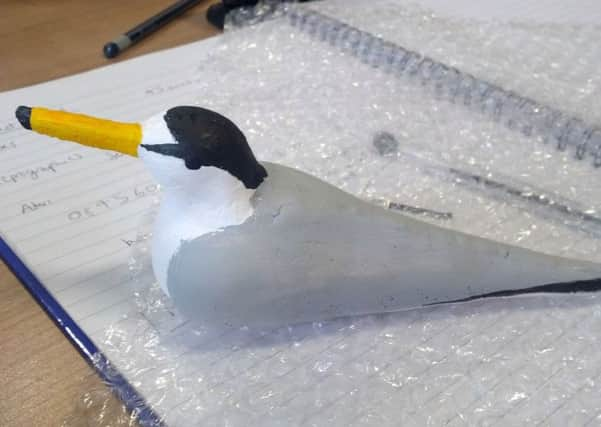Dummy birds installed to lure real terns back to Langstone Harbour


The RSPB has created the fake birds to put on islands in Langstone Harbour in the hope that the threatened birds will feel at home there.
The breeding little tern population in south-east England has declined by 86 per cent during the past 30 years, while Langstone Harbour’s population has dropped from 171 to 31 pairs in the same period.
Advertisement
Hide AdAdvertisement
Hide AdAs well as the hand-painted models, the RSPB has added 1,500 tonnes of shingle and eight tonnes of crushed cockleshells to the shoreline, using £160,000 of donations to create a homely environment for the birds.
Wez Smith, the site manager for the RSPB, said: ‘We owe a lot to our volunteers, partners and funders who’ve helped shovel shingle, crush and lay cockleshells, paint the decoy terns and clear vegetation to prepare the perfect conditions for little terns to start breeding here.
‘Just before the birds begin to arrive in mid-April, we’ll be busy putting out model terns and playing recordings of their calls to draw the real ones in to the site.
‘Our work’s not done there though.
‘Over the breeding season we’ll be monitoring the nesting sites on a continual basis, both via boat and camera, in an effort to head off any problems.
Advertisement
Hide AdAdvertisement
Hide Ad‘Meanwhile, we’ll also be busy working with the local community to let everyone know about the amazing wildlife on their doorstep and how they can help give these threatened birds a continued home here in Langstone Harbour.’
Langstone and Pagham, near Bognor, are among 60 breeding sites in the UK and all are under threat from the warming sea and increased coastal flooding.
In recent years eggs or chicks have been washed away by the tide.
The chattering seabird dives into the water to catch small fish to feed its young.
Advertisement
Hide AdAdvertisement
Hide AdTim Webb, spokesman for the RSPB, said: ‘The islands of Langstone Harbour on the Solent are home to one of the UK’s most important breeding colonies of little terns.
‘These small, shingle-nesting seabirds travel 6,000 miles from western Africa and back each year to breed in the harbour and raise their young on the area’s rich supply of sand eels and other small fish.’
He added: ‘Their nesting sites are susceptible to failure due to increased storm surges in a more erratic climate, predation, human disturbance and fluctuations in food supply.
‘Our answer to these problems has been to restore and create suitable, safe nesting sites, which we can protect from predators.
‘The task ahead is to attract returning little terns to these sites.’